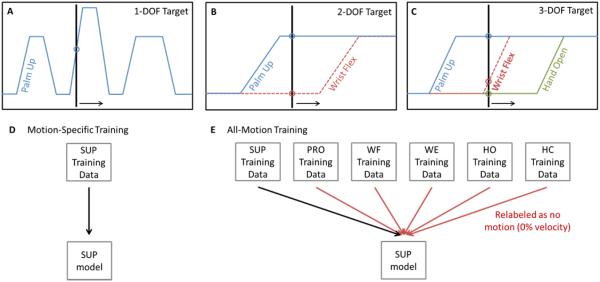Figure 2.
Training protocols for linear regression control, (A-C): Visual prompts used to obtain training data for (A) each of the six 1-DOF movement types and (B) all possible 2-DOF combinations (C) and 3-DOF combinations. A cursor moved along a trajectory with three ramps, prompting subjects to increase or decrease the intensity of their contraction accordingly (arrow denotes direction of movement). Methods used to train regression models, (D-E): (D) Motion-specific training used data collected from only corresponding contractions (e.g. the supinator model was trained using data from when only supination was active). (E) All-motion training used all data as inputs into each regression model, where data not corresponding to the model’s motion type were labelled as 0% velocity (e.g. data from all motions were used to train the supinator model, but contractions where subjects were not actively supinating were labeled 0% supination velocity). SUP = supination, PRO = pronation, WF = wrist flexion, WE = wrist extension, HO = hand open, HC = hand closed.

